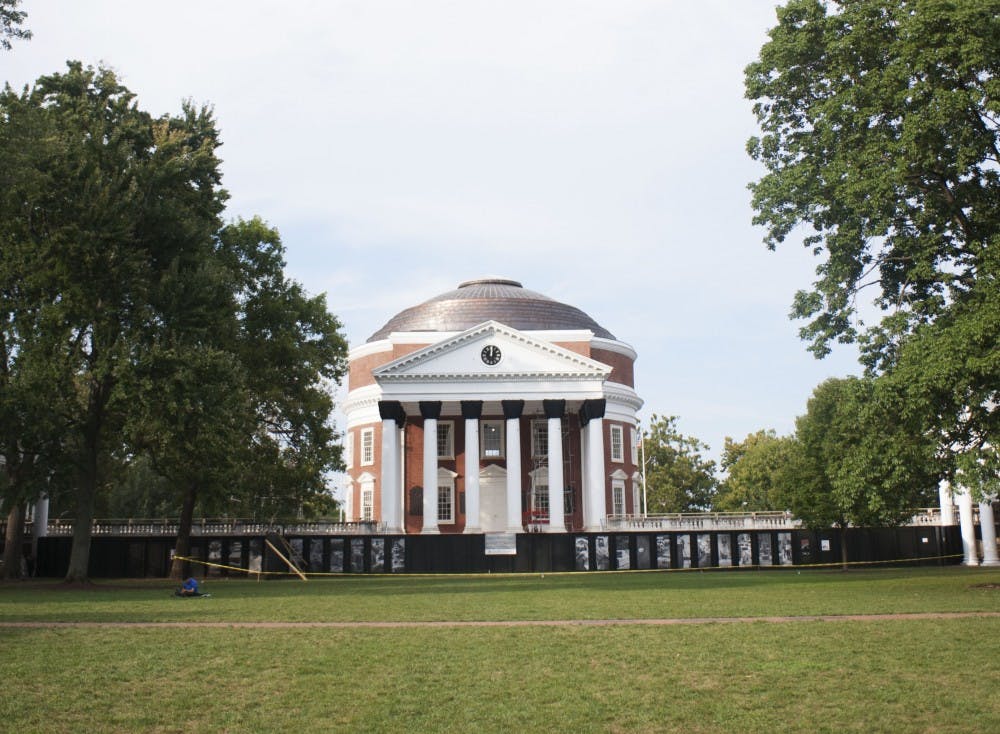The University tied for 102nd out of 500 total universities in a new Global University Rankings list recently published by U.S. News & World Report.
This position contrasts with the University's No. 23 ranking among national universities and listing as the second-best national public university in the U.S. News & World Report’s Best National Universities for 2015, released in September. On the new global list, the University was ranked 52nd out of the 140 U.S. universities included.
The global rankings, according to the publication, reflect individual university performance in terms of academic research as well their reputation both regionally and globally.
To develop the list, U.S. News & World Report garnered data from Thomson Reuters Research Analytic solutions to populate a list of 750 universities from which the top 500 would be ranked.
The publication then generated an in-depth grading system based on 10 independent indicators. Ranked in order of importance, these indicators were: global research reputation, regional research reputation, publications, number of highly cited papers, normalized citation impact, total citations, percentage of highly cited papers, international collaboration, number of doctorate degrees awarded, and number of doctorate degrees awarded per academic staff member. The four top indicators accounted for half of the overall score.
The ranking system differs sharply from the publication's national ranking list, which examines academic excellence in terms of instruction rather than emphasizing publications and research reputation. Specifically, the national ranking assigned value to the quality of education throughout 16 different academic departments to compute the rankings.
The U.S. News & World Report webpage highlighted the shift in focus for the Global University Rankings.
“[The rankings] focus specifically on schools' academic research and reputation overall and not their separate undergraduate or graduate programs,” according to the website.
University spokesperson Anthony de Bruyn said the global rankings appear to favor large research institutions with significant investments and resources in STEM fields and research and development. Arts and humanities journals were excluded from the citation-based indicators, though were included in that of publications, de Bruyn said.
“Such rankings greatly devalue our standings in fields such as law, English, Religious Studies, history and Spanish — all top-ranked fields,” de Bruyn said in an email. “For instance, the fact that we have two Poets Laureate doesn’t appear to count. … [However,] U.S. News consistently recognizes U.Va. as being one of the top public universities in the nation — a testament to our high-quality faculty and high-achieving students.”
U.S. News & World Report's website said the exclusion of arts and humanities journals was intentional.
“Arts and humanities journals accumulate few citations and citation analysis is less robust,” the publication's webpage reads. “Therefore, the deliberate exclusion of arts and humanities improves the robustness of the results.”
Other top-ranked national universities also fell significantly in context of the Global University Rankings. Emory University, which tied for 21st in the National University Rankings list, placed 84th globally. Similarly, Vanderbilt University, which was ranked 16th nationally, was 89th globally.
Other schools, however, fared better under the global ranking. The University of Michigan, Ohio State University and the University of Florida, which all ranked below the University in the National University Rankings list, ranked higher globally at the respective positions of 14th, 34th and 53rd.
English Prof. John Casteen, former president of the University, said he refers to QS’s global rankings when he does work with the Lincoln Project of the American Academy of Arts and Sciences. He cited the QS as the world standard of global university rankings, which includes historical and global data not provided by the rankings by U.S. News & World Report.
Casteen spoke to a Student Council-sponsored forum last Friday and raised the issue of the declining number of research-heavy U.S. universities.
“I talked about the QS World University Rankings,” Casteen said. “Specifically about the declining numbers of U.S. universities appearing in the top 50 during the years in which Congressional support for our national research infrastructure has been stagnant, and about the phenomenon that within the group of U.S. research-intensive universities still in the QS World University Rankings top 50, only two show marked upward trends during the last five years.”





